Special Edition: The Fall Revue of Reviews
Our fall harvest may be the strangest collection of books ever brought together: new books, not-so-new books, even an out-of-print book; science books and spirituality books and even a romance novel. While only a few of these books include a mention of Reiki, we found all of them likely to be of interest to Reiki practitioners.
No guest reviewers this time -- all reviews are by yours truly, editor Janet Dagley Dagley. If you'd like to review a book for The Reiki Digest, contact us at editor@thereikidigest.com. Unfortunately our budget does not yet allow us to pay reviewers, but you get to keep the book you review.
The Body Has a Mind of Its Own
Sandra Blakeslee and Matthew Blakeslee
Random House
September 2007
Scientists and energy workers have a longstanding disagreement on the question of whether there is such a thing as a human biofield. Until or unless it can be proven scientifically -- and Kirlian photography isn't yet accepted by science -- the scientists will continue calling it "putative."
This book barely acknowledges that question, staying entirely within the realm of proven science, specifically the science of body maps in the brain. Third-generation science writer (and frequent New York Times contributor) Sandra Blakeslee and her son, fourth-generation science writer Matthew Blakeslee, are adept at translating science into understandable English, and their enthusiasm for the subject is contagious. The Blakeslees introduce us to "a recently discovered scientific fact" that is at least as fascinating as the putative biofield: peripersonal space.
Your peripersonal space is the space around you, as mapped by the ever-fluctuating body maps in your brain. Pick up a pencil or a fork and your peripersonal space automatically morphs to the tip of the object; drive a car and your peripersonal space engulfs it. We have not one but many body maps in our brain, each with its own function in enabling us to interact with the world around us.
Not only Reiki practitioners and other bodyworkers, but anyone who works in the healing arts whether Western or Eastern, should read this book. Hairdressers and manicurists and aestheticians and parents and lovers and siblings should read this book -- for that matter, anyone who gets close to another person, even on a crowded subway where our peripersonal space is contracted tightly. This is the first book I've ever read for review that I picked up and started reading again as soon as I was finished. Reiki teachers, if you have a required or recommended reading list for your students, this should be on it.
When we work with our clients, we move into their peripersonal space, not only with our bodies but with our own peripersonal space. When we practice Reiki self-care, we work with our peripersonal space. Not only that, but many of the problems that bring people to us are related to their peripersonal space. While it isn't necessary for us to understand the details of these brain maps, just becoming familiar with the concept can help us interact better with our clients.
Peripersonal space is just one of the scientific facts we learn about in The Body Has a Mind of Its Own. There are the homunculi, somatosensory and motor, comically misproportionate maps of our bodies found in the brain by an early 20th Century researcher who sawed open skulls and poked the brains of live, conscious patients with an electrode. There are our intuition cells -- yes, there are such things and scientists now know exactly where they are. And then there are the place cells and grid cells, the former able to adapt to rearranged furniture or even different environments, the latter fixed. There are even out-of-body experiences in scientifically controlled laboratory experiments.
There's even a brief mention of Reiki:
"In traditions of healing touch -- shamanic healing, energy healing, universal life energy, Reiki, and scores of other healing practices around the world -- practitioners use a combination of of visual imagery, motor imagery, and gestures to merge their own peripersonal space sense with that of their patients...The scientific method has never been able to confirm that chi flows or other mystical vital energies are real and present in the mind and body....
"Perhaps science, having banished these energies from its account of reality, can nonetheless explain the sensory awareness that people have of them."
The Demon's Sermon on The Martial Arts
Issai Chozanshi
Translated by William Scott Wilson
Kodansha
2006
There is nary a mention of Reiki in this book, nor should there be as it was written in the 18th Century and Usui developed the system of Reiki in the 20th Century. It may be of interest to Reiki practitioners for two reasons: one, it takes place on Mt. Kurama, the legendary birthplace of Reiki; and two, the stories (and sermon) teach us about working with ki.
For hundreds of years (at least) before the birth of Reiki founder Mikao Usui in the mid-19th Century, Mt. Kurama was a training ground for martial artists, as it was the lair of the tengu, or mythical mountain demons. (Coincidentally, Aikido founder Ueshiba Morihei is said to have trained on Mt. Kurama in the 1920s, and even learned some of his martial arts from the tengu there, according to the book's introduction.) All serious students of Reiki history, and of energy work, can learn from this book, and its stories are delightful and enlightening reading.
Forecast
Jane Tara
Love Spell
November 2007
I don't usually read romance novels, but this one was recommended by a reader and Reiki Dojo regular who got an advance copy from a friend. "It has a Reiki practitioner in it," she told me, "A Reiki practitioner who's on Oprah. So I thought you'd be interested." She was right. Although Reiki plays a relatively small role in Forecast, the book weaves together (comically at times) many so-called "New Age" practices and beliefs in the archetypal tale of girl gets boy, girl loses boy, girl gets boy back again. An amusing reminder that the phrase "New Age" was coined back in the 1980s to market books. Whether you're into "New Age" or sick of the term, it's an enjoyable light read. The "romance" scenes themselves are few and almost perfunctory, as Tara focuses instead on the attraction between the characters.
The Science of Oneness
Malcolm Hollick
O Books
2006
Scientist-turned-spiritualist Malcolm Hollick went from the University of Western Australia to join the Findhorn spiritual community in Scotland 10 years ago, emerging nearly a decade later with an award-winning book subtitled, "A Worldview for the Twenty-First Century." This worldview includes not only physics and spirituality but a universal consciousness as well. Hollick addresses the limitations of scientific inquiry with all the credibility of an experienced scientist, forged with the insight developed in his spiritual search. By the way, one of the hundreds of sources Hollick cites is a prior work by Sandra Blakeslee. Hollick is also a member of the Zaadz online community, where he also has a blog.
Modern Reiki Method for Healing
Hiroshi Doi
Fraser Journal Publishing
2000
(out of print)
I tried for more than a year to buy this book through Amazon, but even they couldn't find it. Fortunately, a regular reader who had an extra copy was kind enough to give it to me, for which I am very grateful. Hiroshi Doi is the outside world's connection to the Usui Reiki Ryoho Gakkai, the Japanese Reiki association. He has studied and practiced both traditional Japanese and Western forms of Reiki and developed his own form that is a fusion of the two. Doi gives us a glimpse inside the Gakkai, but only a glimpse. He also makes the unsubstantiated claim that Usui "rediscovered" Reiki, and calls it an ancient shamanic practice. Certainly there were ancient hands-on healing techniques, but there is no evidence (none public, anyway) that the system of Reiki goes back further than Usui. Perhaps there will be a new edition someday, and perhaps it will offer an explanation or even more detail on that much-disputed subject.
Although Doi himself is Japanese, his Reiki method seems more Western, which parallels his training. He uses the chakra system, for example, which comes from India rather than Japan and was added to the system in the West.
The photos of Doi's granddaughter demonstrating the hand positions are charming as well as useful, and along with the illustrations, Doi makes the point that actual physical contact is not necessary for Reiki to work.
Here's hoping the book will be reprinted, possibly in a new edition, or better still, we'd love to see a completely new book from the same author.
Have you recently read a book you believe would be of interest to other Reiki practitioners? Tell us about it by contacting editor@thereikidigest.com.
Because of this Special Edition, we'll save the regular Reiki Roundup and Celeb-Reiki features for next week. See you then!


















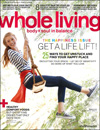
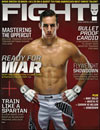
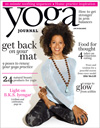
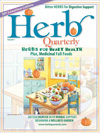
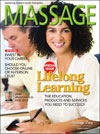
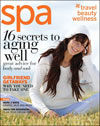
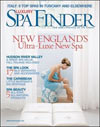
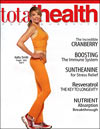
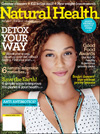





0 Comments:
Post a Comment
<< Home